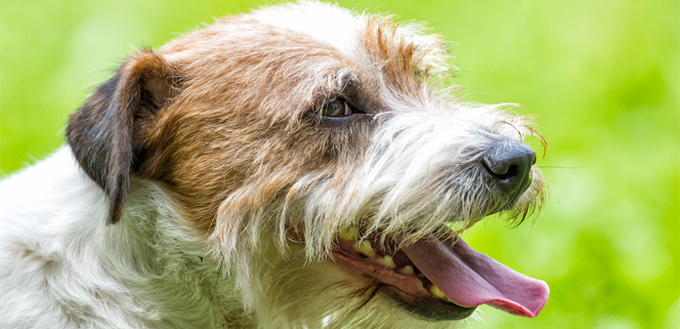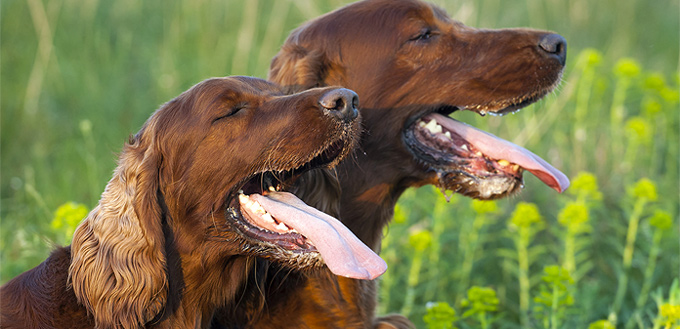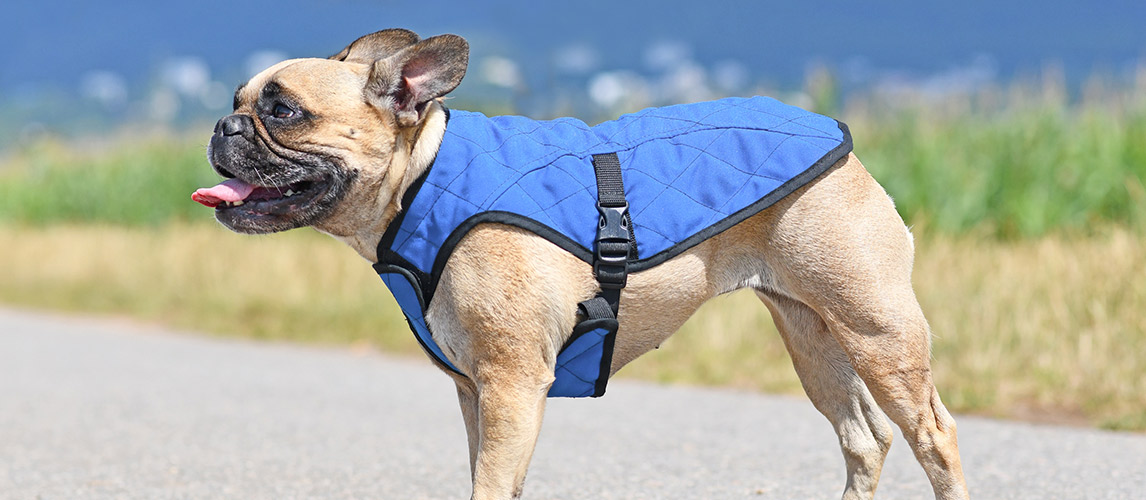Unlike their human owners, dogs hardly sweat at all – only through their feet and inner ears, in fact. This means they’re highly unusual compared to other mammals, who usually cool off by releasing sweat through glands all over their skin. It’s the evaporation of this sweat which provides a cooling effect.
Since maintaining consistent body temperature is so important, it might appear that dogs missed out on the humble sweat gland through some sort of evolutionary hiccup. However, our canine friends have developed some alternative ways to handle the heat, including panting, and vasodilation. Overall, though, dogs just aren’t as efficient at cooling their bodies as humans. Luckily, there’s plenty you can do to keep your furry friend at their optimum temperature.

Why Is Regulating Body Temperature So Important?
Dogs, like the vast majority of mammals, are warm-blooded – this means they maintain a consistent body temperature regardless of their environment. Most dogs have an internal body temperature of 101.5 degrees Fahrenheit, running a few degrees hotter than your average human. Smaller dogs tend to maintain slightly lower body temperatures and larger dogs slightly higher ones.
Keeping a constant body temperature is incredibly important to mammals like dogs and humans. The myriad chemical processes keeping us alive work best within a relatively narrow temperature range, and at higher or lower temperatures they can cease to work properly, causing a whole host of problems. Many of the most vital processes, such as releasing energy from food, breaking down waste, and supporting the function of the brain, are carried out by molecules called enzymes. At high temperatures, enzymes can become denatured, meaning they’ve been mangled by the heat, and can no longer carry out their function. With so much riding on these chemicals, maintaining a temperature at which they work is essential.
How Do Dogs Cool Off If They Hardly Sweat?
When a dog’s body temperature is too high, a part of the brain called the hypothalamus detects it, and cooling mechanisms are put into action. Although they do sweat a little through glands on the pads of their paws and ear canals, dogs have two methods of heat loss which are far more important:
- Panting
As most dog-lovers know, when dogs are hot, they pant. It’s amusing to imagine that our canine compatriots are simply out of breath after bounding about, but panting is actually a dog’s first port of call for cooling down their bodies. When dogs pant, they take in air which picks up moisture from their nose or mouth. As the water vapor makes its way into the dog’s lungs, it absorbs heat from the core of their body. This means that when the dog expels the breath, they expel some excess heat along with it. The mechanism works well because water can hold a lot more heat than air – this is one of the reasons why dogs maintain a wet nose, too.
- Vasodilation
When a dog’s body becomes too hot, blood vessels in their face and ears dilate. This brings their blood closer to the surface of the skin, allowing heat to radiate away. This method works best when the excess heat is due to exercise, and the air temperature outside the dog’s body is cool.
As well as these methods, a dog’s coat can actually help them to keep their cool. Their thick hair coverage provides an insulating layer which can keep excess heat at bay as well as biting cold. However, as the dog is exposed to high temperatures for a longer stretch of time this protective layer becomes less effective, since the heat has had a chance to dissipate through their coat.
What Happens When Dogs Overheat?
Overheating is dangerous for dogs. If a dog’s internal body temperature gets too high, they can suffer from heatstroke, just like humans. When a dog’s internal body temperature rises by just a few degrees, there’s a real risk that they’ll die from overheating. Watch out for these symptoms that your dog is starting to overheat:
- Excessive panting
- Thickening saliva
- Reddening gums
- Flushed skin around the ears, muzzle, and underbelly
- Being warm to the touch
Hot weather will affect some dogs more than others, and you should keep an especially close eye on your dog if:
- They are a brachycephalic breed
These breeds include pugs, bulldogs, and others with the characteristic wrinkled face. This facial architecture makes panting more difficult and less effective. Since panting is a dog’s go-to method of heat dissipation, they’re particularly at risk from overheating.
- They have a dark coat
Darker colors absorb more radiation – including heat. Dogs with dark coats are more likely to overheat on sunny days than their lighter-toned counterparts.
- They are obese
The extra layer of fat in overweight dogs acts as extra insulation, making it more difficult for their body to expel heat.
If you think your dog is experiencing heatstroke, move them to a cool area and offer them small amounts of water. You should contact your vet for further advice.

Related Post: Automatic Ball Launcher
What Can you Do to Help your Dog Stay Cool?
Because dogs aren’t as efficient at cooling their bodies as humans are, it’s important that owners take steps to ensure their dog stays comfortable and safe. There are plenty of ways to do this:
- Ensure your dog has access to lots of cool water and shade on hot days.
- Avoid exercising your dog in temperatures above 80 degrees Fahrenheit.
- On hot days, walk your dog in the early morning to avoid the intensity of midday heat.
- Do not leave your dog alone in the car for more than five or ten minutes, and avoid doing so at all if possible.
- Carry your dog’s ball back home for them after playing fetch. Having their mouth free will allow them to pant, getting rid of excess heat
- Consider a dog cooling pad. These are comfortable mats that provide a place for your dog to cool down. They work by absorbing heat from your dog’s body, and dissipating it into the surrounding air.
Related Post: Dog Water Fountain
Sources:
- Dr. Justine A. Lee, Do Dogs Sweat?, Pet Health Network
- Dr. Sophia Catalano, Why do Dogs pant?, Pet MD
- Anna Burke, Do Dogs Sweat?, American Kennel Club






